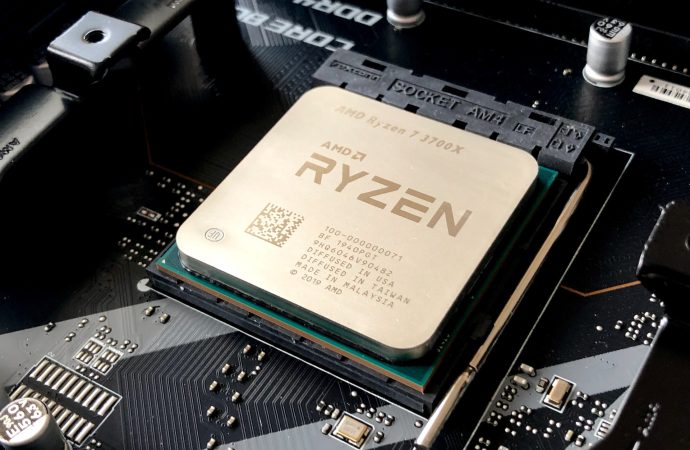The Future of China’s Industry Amidst US-China As trade tensions between the US and China continue to escalate, industries around the world are feeling the effects. One major player in this global struggle is China’s semiconductor industry, which has been hit hard by restrictions on exports and a lack of access to vital technologies. But
The Future of China’s Industry Amidst US-China
As trade tensions between the US and China continue to escalate, industries around the world are feeling the effects. One major player in this global struggle is China’s semiconductor industry, which has been hit hard by restrictions on exports and a lack of access to vital technologies. But what does the future hold for this key sector of China’s economy? In this article, we’ll take a closer look at how current uncertainties are affecting Chinese industry as a whole, explore some potential scenarios for the future of semiconductors in particular, and offer insights into why staying ahead of these trends is more important than ever before.
The current state of China’s industry
China is the world’s largest marketplace and a major player in nearly every sector of the global economy. Currently, China’s industry is facing some significant challenges due to several factors including a slowdown in domestic demand and increasing trade tensions with the United States.
Despite these issues, China remains resilient and adaptable. The country has been investing heavily in high-tech industries such as artificial intelligence, 5G telecommunications, and electric vehicles. Additionally, China continues to be a leader in manufacturing sectors such as textiles, steel production, and consumer electronics.
However, certain areas of Chinese industry are struggling more than others. The semiconductor industry has been hit particularly hard by US restrictions on exports of key technologies like software tools used for chip design. This has resulted in Chinese companies being unable to produce advanced microchips that can compete with those made abroad.
China’s industrial landscape remains diverse and dynamic despite current uncertainties. Whether it’s through new investments or innovative approaches to traditional industries, there is no doubt that China will continue to play a significant role on the world stage for years to come.
How the US-China trade war has affected China’s industry
The US-China trade war has caused significant uncertainty in China’s industry over the past few years. The two countries have imposed tariffs on each other, causing a decline in export demand and increasing manufacturing costs.
The semiconductor industry is one of the most affected industries due to its heavy reliance on exports. With Huawei being put on an entity list by the US government, many Chinese technology companies have been forced to look for alternative suppliers for their semiconductors.
Moreover, some companies are relocating their production facilities to other countries such as Vietnam and Thailand to avoid higher tariffs levied on goods produced in China. This exodus from China could potentially lead to long-term damage of its industrial growth.
In addition, the trade tensions resulted in decreased foreign investment opportunities and hindered access to advanced technologies critical for innovation. Many experts believe that these factors may slow down China’s economic growth if not adequately addressed.
It’s clear that the US-China trade war has had a profound impact on China’s economy and industrial sector. As both nations continue negotiations towards resolving their differences peacefully, only time will tell what effects this will have in reshaping global economies’ future trajectories.
The potential future of China’s industry
The future of China’s industry is uncertain, especially with the ongoing trade tensions between the US and China. However, it is important to note that China has been actively working towards becoming a leader in technology and innovation. This can be seen in their increasing investment in research and development.
China’s focus on emerging industries such as electric vehicles, renewable energy, 5G technology, and artificial intelligence also shows potential for growth. The country has already made significant strides in these fields but still has room for improvement.
Additionally, China’s semiconductor industry may face challenges due to the US government’s restrictions on exports to Chinese tech giant Huawei. However, this could potentially lead to increased investment in domestic chip production.
While there are uncertainties surrounding the future of China’s industry amid US-China trade tensions, it is clear that the country will continue its efforts towards technological advancement and innovation.
Conclusion
China’s industry has faced major uncertainty due to the ongoing US-China trade tensions. The semiconductor industry, in particular, has been greatly affected by this conflict. However, China’s government and corporations are working to promote innovation and develop domestic industries in order to reduce reliance on foreign technology.
The future of China’s industry is uncertain, but one thing is clear: it will not be the same as its past. As new technologies emerge and global markets shift, Chinese companies must adapt in order to remain competitive. Despite these challenges, there are many opportunities for growth and development within China’s economy.
It remains to be seen how the US-China trade war will ultimately affect China’s industry. But one thing is certain – with determination and strategic planning from both government officials and business leaders alike – we can expect great things from this country in the years ahead.

















Leave a Comment
Your email address will not be published. Required fields are marked with *